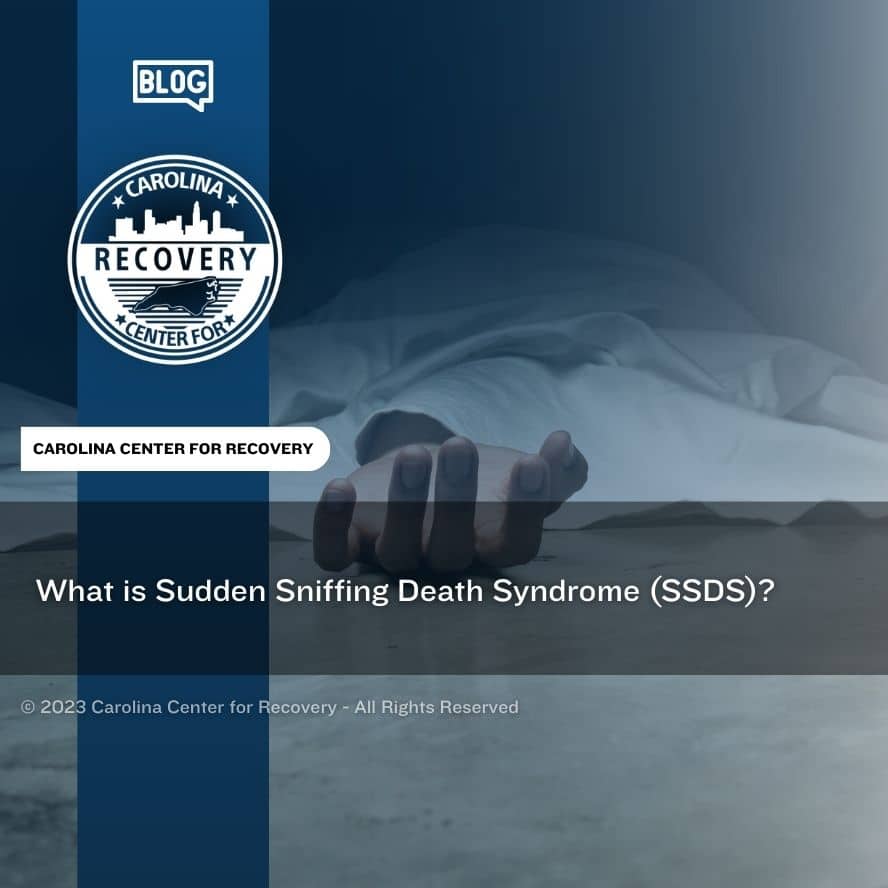What is Sudden Sniffing Death Syndrome (SSDS)?

Medically Verified: 2/1/24
Medical Reviewer
Chief Editor

All of the information on this page has been reviewed and verified by a certified addiction professional.
Common household items can contain volatile chemicals that are harmful to a person’s brain and body. Inhalant abuse occurs when someone breathes in the vapors of certain chemicals to get “high.”
Inhalant abuse has many short-term and long-term risks. One of the most severe risks of inhalant abuse is a condition called sudden sniffing death syndrome (SSDS).
Sudden sniffing death syndrome occurs when inhalant abuse leads to an almost immediate death. People who develop SSDS typically die within just minutes of using an inhalant. First responders and other medical professionals usually cannot save a person’s life if they develop SSDS.
The only way to prevent sudden sniffing death syndrome is to stop using inhalants. This article will explore what SSDS is, how to recognize and prevent inhalant abuse, and where to find volatile substance abuse treatment.
Reach out to the specialists at the Carolina Center for Recovery now to learn about our comprehensive substance abuse treatment programs or to schedule an intake assessment.
Inhalant Abuse: An Overview
The National Institute on Drug Abuse (NIDA) defines an inhalant as “a volatile substance that produces chemical vapors that can be inhaled to induce a psychoactive, or mind-altering, effect.” Inhalants of abuse are substances found in easily accessible household products.
Commonly abused inhalants include:
- Paint thinner
- Aerosol sprays, including spray paint
- Whipped cream canisters
- Nitrous oxide
- Butane propane
- Gas
- Glue
- Markers
- Correction fluid
- Dry cleaning fluids
- Butyl nitrite, including video head cleaner and leather cleaner
Common inhalant abuse methods include:
- Spraying aerosols into the nose and mouth
- Dispensing a product into a plastic or paper bag and inhaling the fumes–sometimes called “bagging”
- Soaking a rag with chemicals and placing it over the nose and mouth–sometimes called “huffing”
- Breathing in fumes directly out of the container
- Inhaling nitrous oxide or other substances from a balloon
Abusing inhalants has many short and long-term risks. It is important to understand these risks and seek treatment for inhalant abuse as soon as you recognize a problem.
What is Sudden Sniffing Death Syndrome (SSDS)?
Sudden sniffing death syndrome (SSDS) occurs when someone dies suddenly while abusing an inhalant. Medical professionals do not fully understand what causes SSDS. However, many health experts believe SSDS occurs when a person’s body goes into shock during inhalant abuse and suffers heart failure.
Heart failure can occur when the heart is deprived of oxygen. Inhalants prevent adequate blood flow and oxygen to the heart. Some medical professionals believe that inhalant abuse can decrease the heart’s resilience to adrenaline and other chemicals that are produced when people abuse inhalants. This may also contribute to cardiac arrest.
Abusing any inhalant can cause sudden sniffing death syndrome, but butane, propane, and aerosols have the highest risk.
In addition to the risk of SSDS, inhalant abuse can cause other severe problems, such as an increased risk of liver and kidney damage, brain damage, and cardiovascular problems. It is crucial to seek treatment for inhalant abuse as quickly as possible to avoid life-threatening harm.
Recognizing Inhalant Abuse
Recognizing inhalant abuse can help you find the treatment you need to start recovering from it. Inhalant abuse can cause noticeable physical and behavioral changes that can alert you to a problem.
Some of the physical signs of inhalant abuse include:
- Weight loss
- Poor coordination
- Sores around the mouth
- Chemical smell on the breath or clothing
- Paint stains on the skin or clothing
- Excitability
- Irritability
- Anxiety
- Appearing dazed or drunk
- Dizziness
- Nausea
Some behavioral signs of inhalant abuse include:
- Using inhalants in dangerous situations, such as while working or driving
- Wanting to stop or reduce inhalant use but finding that they cannot stop on their own
- Developing tolerance to inhalants, meaning they need to use more to get the effects they want
- Having cravings for inhalants
Inhalant Abuse Treatment
People who abuse inhalants may exhibit signs of physical dependence. People with addiction to inhalants may experience withdrawal symptoms if they suddenly stop using them. Treatment and support are critical during detox from inhalants to avoid relapse.
Inhalant withdrawal symptoms may include:
- Anxiety
- Difficulty sleeping
- Tingling sensations in the body
- Tremors
- Muscle cramps
- Seizures
- Sweating
- Nausea
- Irritability
- Loss of appetite
Comprehensive treatment is essential for people with inhalant abuse or dependence. A medically supported detox program can keep people safe as they detox from inhalants or other substances. During detox, medical and mental health specialists will provide tailored treatment that includes medications, emotional support, and round-the-clock supervision.
After detox, people must continue their treatment in a comprehensive rehab program that can give them the tools to avoid relapse for the rest of their lives.
Find Treatment for Inhalant Abuse
Inhalant abuse can harm your body and mind. Find the treatment and support you need to overcome inhalant abuse at the Carolina Center for Recovery. Reach out to our team of specialists now to explore your treatment options.

